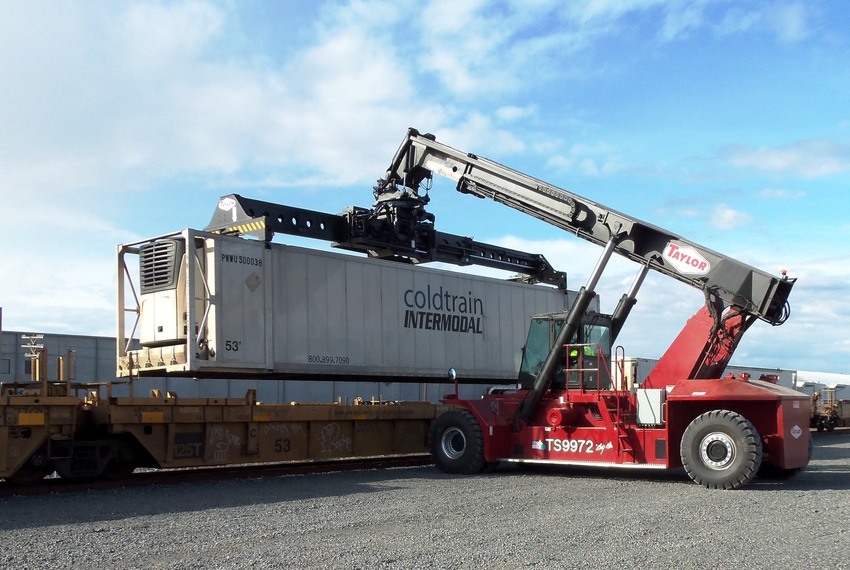Utilizing port would reduce congestion, move containers faster and improve turnaround times.

There has recently been a lot of interest and inquiries from shippers and other stakeholders about utilizing the Port of Quincy (Wash.) Intermodal Terminal as a westbound inland intermodal port in central Washington in which trains could be loaded with ocean containers of the state's dry agricultural products and then be moved by rail to the ports of Seattle and Tacoma, Wash., to be loaded onto ocean container ships.
The intermodal terminal, located on the BNSF mainline Stevens Pass line, includes more than 8,000 ft. of rail storage/siding tracks and could easily accommodate loading westbound short-haul intermodal trains with 40 ft. or 20 ft. containers of dry goods such as hay, corn, wheat, beans, other grains or legumes, etc.
The Port of Quincy Intermodal Terminal includes: a container maintenance and cleaning facility, nearly 1 million sq. ft. of warehousing in close proximity to provide shippers with distribution, cross-dock and storage capacity in and out of central Washington, a container reach stacker, a top pick container loader and a shuttle wagon/yard goat (i.e., a small locomotive) to move and organize stacked containers within the terminal. Additionally, the intermodal terminal resides on 16 acres of land, with another 20-plus acres available for expansion on adjacent port-owned property to the east of the existing terminal.
In February, the NW Seaport Alliance provided a presentation/report to shippers and stakeholders in central Washington titled "Inland Port Impact on Growing the Agriculture Industry." According to the presentation, an inland port would offer the following benefits:
• Congestion on major roadways and mountain passes would be reduced as the number of truck trips per day would decrease to/from the Puget Sound.
• Containers could be moved with more speed and reliability while lowering the carbon footprint of exports via rail.
• Containers could be spotted closer to the shippers, with 24/7 availability to pick up or drop containers in a secured yard.
• New investments would be attracted in warehousing facilities and other industries supporting the agricultural market.
• Turn times could be improved so that exporters would be able to ship more of their products overseas because marine terminals would be less congested.
Washington state Rep. Matt Manweller, co-chair of the Washington State House Rail Caucus, stated, "There is a great deal of interest by the Rail Caucus in exploring the concept of an inland intermodal port or terminal that would give trucks that haul export containers of Washington state agricultural goods and other products the option of going to a less-congested inland port location in central Washington."
The export containers could be then loaded onto westbound intermodal trains at the inland port location instead of trucking the containers over busy freeways (such as I-90/Snoqualmie Pass) into more congested urban areas in the Puget Sound, Manweller explained.
The Port of Quincy has a successful track record of handling/shipping both westbound ocean containers and eastbound domestic intermodal containers. In the early 2000s, export containers of refrigerated agricultural products were shipped by short-haul intermodal trains from the Port of Quincy Intermodal Terminal to the ports of Seattle and Tacoma. More recently (until late 2014), the Port of Quincy Intermodal Terminal was used to load eastbound refrigerated intermodal trains, and several-thousand intermodal containers per year were being shipped from Quincy to various destinations in the Midwest and along the East Coast.
"We appreciate the discussion and interest in the Port of Quincy Intermodal Terminal as an inland rail port in which ocean containers would be received and hauled by train to Seattle and Tacoma marine ports, and we look forward to working with various shippers, decision-makers and other interested parties as these discussions continue,” Port of Quincy chair Curt Morris said.
About the Author(s)
You May Also Like


.png?width=300&auto=webp&quality=80&disable=upscale)
